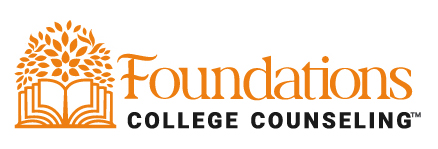College is expensive in the US. Tuition costs have far outpaced inflation in this country and have grown by as much as 200% for some schools over the last 20 years. It’s crazy, and it has created a student debt crisis in this country. Today, about 43 million Americans collectively owe almost $1.6 TRILLION in student loans, which is more than all American credit card debt combined…by a lot.
BE REALISTIC AND PLAN AHEAD:
- I strongly recommend families keep finances in mind and discuss affordability regularly as part of the college planning process. The average student loan debt for someone with a bachelor’s degree is nearly $30,000, for people with a master’s degree it’s over $70,000, and for PhDs nearly $160,000. And in medical school, a student can expect to rack up an average debt of an eye-popping $207,000. Parents, be honest (both with your kids and yourselves) about what you can afford and what you’re willing to contribute to your child’s education.
- If you don’t yet have a college savings plan, consider a 529 College Savings Plan. These are college savings plans that also provide tax incentives to parents investing in their kids’ futures. The earlier you start saving, the better. Thanks, compound interest!
- Talk to a financial adviser who can help you with long-term savings planning. I recommend you work with a fiduciary specifically. This is a financial planner who is required to work in your best financial interest in recommending products to you (most financial planners are not fiduciaries).
OTHER WAYS TO PAY FOR COLLEGE
- Grants and scholarships—free money. Grants are often given based on income/academic guidelines, whereas scholarships often require an essay or some kind of project for consideration. Scholarships exist for students as young as elementary school (although they become much more prolific by high school) and extend through graduate school opportunities.
- Loans- Money you have to pay back. Not all loans are created equal.
- Students can be offered Federal Student Loans based on information your family enters on the FAFSA. These come in two forms:
- Subsidized- The government pays the interest on the loan while you’re in school.
- Unsubsidized- the government does not pay the interest on the loan while you’re in school, meaning the loan amount grows before you even start paying it back. (As you can imagine, subsidized loans are usually better than unsubsidized loans, so accept those loans first if you need loans.)
- Students are responsible to begin repaying these loans after they graduate from undergrad or leave school. Many will defer their loans for graduate school. Always be careful to understand exactly how much money you’re borrowing, what you’ll have to pay back after interest, and how much debt you can afford to take on for the income you realistically expect to earn after you graduate.
- Parents, you may be offered federal Parent Plus loans. These are loans from the government that you would take on to pay for your kid’s school. They tend to be lower interest and a decent deal if you need to take out additional loans to pay for school.
- Private student loans- AVOID THESE IF AT ALL POSSIBLE. They come with insanely high interest rates and are often the loans of last resort for families who feel desperate to come up with the money for a school that’s too expensive for them. Some predatory lenders take advantage of students/families who don’t know any better, and, well be very careful with them.
- Two final notes on loans that are extremely depressing but important to understand:
- Student loans are not discharged because of bankruptcy. If you have a student loan and have to file bankruptcy, that debt follows you after the bankruptcy (unlike medical or consumer debt, which get wiped out).
- Moms and Dads, if for some reason you take out a PRIVATE student loan on your child’s behalf or cosign on a loan for them and your child were to die, you would still be obligated to the debt. (This doesn’t apply to federal student loans and Parent Plus loans, which both discharge the debt in full if the student dies.) And remember, it can’t be discharged in bankruptcy. Parents, if you take out private loans to pay for your child’s education, I recommend you also invest in a life insurance policy for that child that could cover funeral expenses and outstanding private loans.
- Students can be offered Federal Student Loans based on information your family enters on the FAFSA. These come in two forms:
- Work-Study- This is a program schools have with the government in which a student works a part-time job on campus in order to cover some of the cost of attendance. Some colleges have better work-study programs than others. Sometimes, though, you can get a better-paying off-campus job and just put that money toward your expenses.
Paying for college can be a stressful venture, but facing it openly can help demystify the process and empower your family to make prudent financial choices in helping your kids get a great education.

